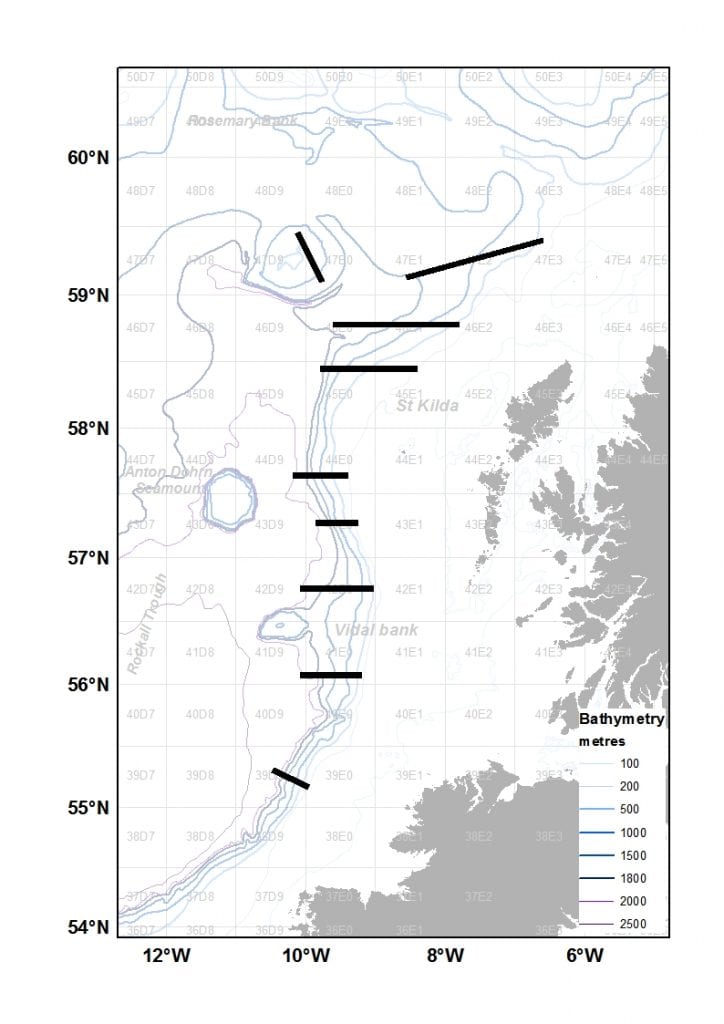Marine
Trawling in the deep with the Scotia
September 13, 2017 by Marine Scotland Communications No Comments | Category Marine Directorate Science, Marine Directorate Surveys, Research Vessel Surveys
Duration: 15-28 September 2017
Gear
- BT 184 Deepwater trawl with 16“ ground-gear and Morgere 1700 kg doors (monkfish)
- Groundgear Bosom bag for BT184
- Agassiz trawl
Objectives
- To map the composition, distribution and abundance of continental slope species including invertebrates on the deepwater slope west of the Hebrides and Rosemary Bank to depths of 2000 m.
- To collect temperature at depth during all deepwater hauls using a data storage sensor attached to the trawl headline.
- To collect samples (genetics and otoliths) for key species for population studies and undertake any other sampling requests, e.g. MSFD litter recording.
- Continued use of groundgear bag and Agassiz trawl on selected stations to further evaluate gear catchability of deepwater fish species at different depths as well as providing valuable benthic assemblage data.
- Retrieval of acoustic mooring from Rosemary Bank upon completion of trawling operations. Details of location and instructions for retrieval to be provided to the vessel prior to embarkation.
Procedures
The deepwater slope survey will depart and proceed south through the Minch to the first trawling station on the shelf slope between 500-2000m within statistical rectangle 41E9. The primary objective is to map the composition, distribution and abundance of fish species on the deepwater slope west of the Hebrides from Donegal to the Flannans (55 – 59N) and Rosemary Bank (see Figure 1). Trawling will mainly be at fixed stations at depths of 500, 750, 1000, 1500, 1800 and 2000 m although additional trawls may be undertaken at intermediate depths within selected transects. Trawl duration will typically be one hour and the locations of trawling stations will be provided to the vessel at the commencement of the survey. No CTD deployments will be made, rather a DST (data storage tag) will be deployed onto the trawl headline for the duration of the survey and will provide bottom temperature data for all of the trawls undertaken during the survey. Trawling will be conducted within the hours of daylight. It may on occasion be necessary to trawl at night although it is accepted that this will be the exception rather than the norm and night time will mainly be spent in passage from one sampling area to the next. From all tows the entire catch will be sorted, weighed and length-frequency data collected for all fish species encountered. Benthic invertebrate by-catch will also be recorded. On selected tows a ground gear bag will be attached for benthos sampling. In addition the Agassiz 2 m benthic trawl will be used opportunistically on selected tows during the survey. Additional biological sampling to be carried out on selected species.
Further Information
Tags: deepwater, fisheries, monkfish, research, science, Survey



Leave a comment